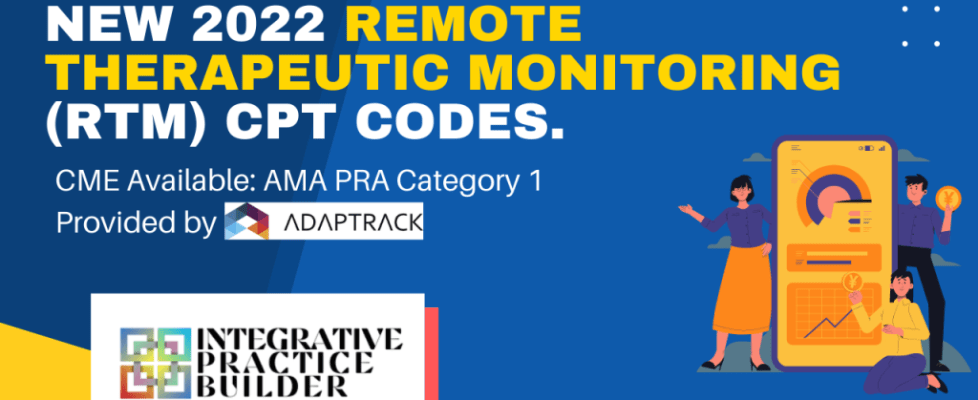New 2022 Remote Therapeutic Monitoring (RTM) CPT codes Can Be Effectively Used By Doctors
Dr. Cheng Ruan Feb 25, 2022
How physician practices can take advantage of the New 2022 Remote Therapeutic Monitoring (RTM) CPT codes.
NOTE: this is different from Remote Patient Monitoring which I cover later in this blog.
Remote therapeutic monitoring is a brand new service description that doctors in private practices (especially those in integrative medicine practices) can use to help their patients make the necessary lifestyle changes to improve their health.
This service can be used to track patients’ progress and identify any potential problems early on. In addition, remote therapeutic monitoring can also help doctors provide more personalised care to their patients.
These codes can be used to bill for the time spent monitoring patients remotely as well as analyze patient reported data outside of the face-to-face or telemedicine encounter. Furthermore, monitoring patients on RTM can make sure patients improve their compliance rates for medications, supplements, or devices (like a CPAP, or Oura Ring)
Doctors who are interested in using remote therapeutic monitoring should talk to their billing company or in house billers to find out more about the specific codes that can be used. By using these codes, doctors can help their patients make the necessary lifestyle changes to improve their health and wellbeing.
There are differences between Remote Therapeutic Monitoring (RTM) vs Remote Patient Monitoring (RP). here are the differences:
While both systems utilize devices, RTM allows for patient reported data. So if a patient experiences a symptom between visits, they can report it to the clinician. This reporting can be analyzed and the time that is allocated to this analysis can be billed under the RTM CPT Codes. This is in contrast to RPM which only can be billed when looking at synchroized data from devices – no reporting from the patient.
Tech companies who develop systems for RTM can create a much more robust comprehensive clinical decision support, such as including alerts and notifications. This is because patient reported symptomology data can be captured either with structured data or unstructured data per disease state. Structured data of course will be the most inexpensive to analyze. Unstructured data bay require tech companies to access artificial intelligence or at the very least machine learning with natural language processing analysis.
RTM can be used for care coordination. This is the biggest benefit for RTM. Billing can be done by multiple providers for each patient. For example, a sleep medicine doctor can monitor a patient’s CPAP compliance and gather patient reported data as well, while their primary care can monitor the patients weight and symptomology for metaboolic syndrome. This means the clinician can send a patient to a different clinician for different types of RTM care without fearing the loss of billing potential. RPM cannot do this since only one physician the patients sees can bill out RPM codes.
When considering whether to use RTM or RPM in your practice, it is important to understand the differences between the two services.

